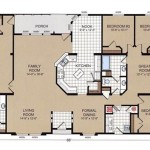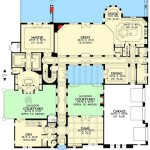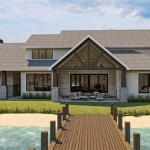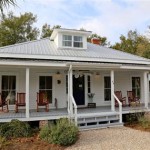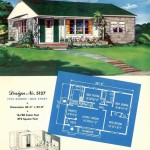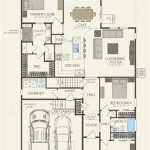Multi-Generational House Floor Plans: Designing a Home for All Ages
Multi-generational homes are becoming increasingly popular as families seek to live together under one roof. These homes offer a unique opportunity to share resources, provide support to family members of all ages, and create lasting memories. However, designing a multi-generational house requires careful planning to ensure that everyone's needs are met.
One of the first considerations is the number of people who will be living in the home. Each family member will need their own private space, as well as shared spaces for gathering and entertaining. It is also important to consider the ages and abilities of the residents. For example, older adults may need features such as grab bars and wider doorways, while younger children will need space to play and learn.
The next step is to decide on the layout of the home. There are two main types of multi-generational floor plans: attached and detached. Attached floor plans have the units connected to each other, while detached floor plans have the units separate but on the same property. Attached floor plans are often more affordable to build, but they can also be less private. Detached floor plans offer more privacy, but they can be more expensive to build and maintain.
Once you have decided on the layout, you can start to design the individual units. Each unit should have its own kitchen, bathroom, and living space. The size and layout of the units will vary depending on the number of people who will be living in each one.
In addition to the individual units, multi-generational homes should also have shared spaces for gathering and entertaining. These spaces can include a living room, dining room, and kitchen. It is important to make sure that the shared spaces are large enough to accommodate all of the family members comfortably.
Multi-generational homes can be a great way to bring families together and provide support to family members of all ages. However, it is important to carefully plan the design of the home to ensure that everyone's needs are met.
Tips for Designing a Multi-Generational House Floor Plan
- Consider the number of people who will be living in the home.
- Think about the ages and abilities of the residents.
- Decide on the layout of the home (attached or detached).
- Design the individual units with each family member's needs in mind.
- Include shared spaces for gathering and entertaining.
- Make sure that the home is accessible to all family members.
- Consider the future needs of the family when designing the home.
By following these tips, you can create a multi-generational house floor plan that meets the needs of your family and creates a lasting legacy for generations to come.

Fun Functional Multigenerational House Plans Houseplans Blog Com

Fun Functional Multigenerational House Plans Houseplans Blog Com

Open Floor Plan Farmhouse Style House 6274 The Granary

Multi Generational Home Designs

Best Multigenerational Homes Four Generations One Roof

Multigenerational Floor Plans Are Perfect For Extended Households

New Life House Plan One Story Multi Generational Craftsman Home Design

Multi Generational Ranch Home Plan With 1 Bed Apartment Attached 70812mk Architectural Designs House Plans

Multigenerational House Plan Trends The Designers

Multigen D R Horton

